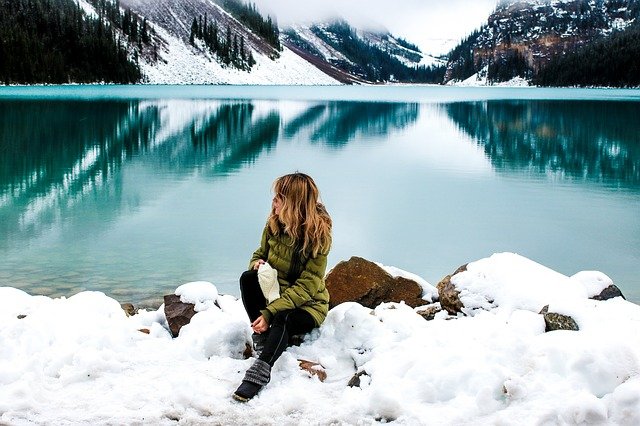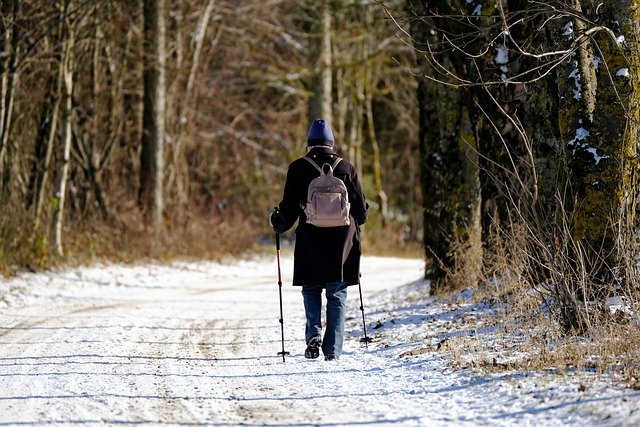“Thousands of tired, nerve-shaken, over-civilized people are beginning to find out that going to the mountains is going home; that wildness is a necessity”― John Muir, Our National Parks
As winter comes calling, many people start planning to stay indoors to avoid the temperature drop and snow falls. However, hikers become energized to make the most of this cold season and start planning for walking the winter trekking trails. The landscape gets completely transformed and white-washed.
The freezing temperatures also bring with it some major security issues for hikers. If you’re a hiking enthusiast, you'll want to get proper gear and adhere to safety tips to make your winter hiking trip successful and comfortable. Here are some cardinal rules for winter hiking to make your upcoming trip safer and more exciting.
1. Pre Hike Planning:
- Watch the weather forecasts closely for favorable as well as adverse conditions. Go through the NOAA-NWS website for comprehensive backcountry forecasts.
- Recognize and strictly avoid the areas where avalanche danger is high according to the local avalanche forecast. Remember that these snowslide predictions can be general and not area-specific.
- Keep your close associates informed about your complete itinerary, about each of the group member’s personal information and any related vehicle information that you will be using for the trip.
- Be prepared for any unanticipated situation. Always keep extra essentials (i.e. food and clothing) to withstand occurrences like sudden weather change, unexpected detours or getting lost.
2. Always opt for Good Gear:
This is another fundamental rule for winter hikers – never compromise on the quality of gear. You must always look for good quality when purchasing the following items:
- Waterproof jacket and pants
- Snowshoes or crampons
- Knee-high gaiters
- Insulated jacket
- Waterproof boots
- Hiking poles
- Lightweight backpack
- Hats/gloves
- Camp stove
- Wrap-around sunglasses or goggles
These are immensely helpful in saving you from wet climate, wildlife, thorns etc. It’s advisable to do some test walks of the gear, especially hiking gaiters through wet, long grass before you actually start your journey.
3. Wear layers of clothing:
One of the fundamental rules of safe winter hiking is to stay warm and dry. Always go for breathable and waterproof clothing that dries quickly, absorbs moisture, and consist of the following 3 layers.
- Base layer: It’s the layer that stays attached to your skin – your underwear. Choose merino and synthetic wool fabrics because of their perspiration-wicking nature.
- Middle layer: It helps with insulation. The basic goal of this layer is to retain body heat. Try to wear polar fleece or expedition-weight fleece pants, shirts, jacket and/or goose down jacket.
- Outer layer: This outermost layer is breathable, waterproof and windproof. Try to buy premium products like REI Elements or Gore-Tax etc. Non-premium products may provide equal waterproofing effect but lower breathability. You should also consider wearing underarm vents and core vents to stay free from excess moisture and heat.
4. Prepare your backpack kit:
To stay safe and comfortable in the backcountry in the cold season, you must take care of some essential things:
- Sun protection
- Navigation
- Illumination
- Insulation
- Fire
- First-aid supplies
- Extra water
- Extra food
- Repair tools and kit
- Compass
- Emergency shelter
- Hand warming pockets
- A pocket multi-tool
- A trail lamp and a headlamp
5. Do your homework about the destination:
You should choose your trip’s difficulty and length based on your expertise level. For instance, if you’re a beginner hiker and want to enjoy a one-night trip, you shouldn’t choose more than 10 miles as your round-trip distance.
If you want to make it a two night’s trip, set up the camp on your first night. Then, plan to hike somewhere on the next day and return to the base camp that night.
To ensure that you’ve got adequate information about your destination, consider exploring information sources like guidebooks, magazines, websites, park websites and experienced hikers.
6. Study your maps thoroughly before starting:
While GPS devices are something you must have while on a hiking trip, consider having a compass and a map as backup. Thorough study of your maps before starting is immensely important as well, in case you find yourself in an adverse situation.
These devices are not only meant for working as your guide, but for finding water, a campsite, locating your vehicle and for helping you to find your exit route in case of emergency.
7. Check the weather and start early:
It’s absolutely important to get a clear idea about the weather of the area before heading out. Thoroughly check all the influential factors like precipitation, temperature, avalanche reports, wind speed and daylight hours.
Winter represents a completely different world than what you get in summer. You may run into icy conditions, snow storms, or deep snow on some trails. It’s advisable to both start early and get off the trail early in order to avoid accidents or getting lost.
8. Create a food checklist and make sure to preserve your food:
It’s essential to develop a food checklist based on the weights and required amount of food of your group. Total count of individual meals should be a good foundation to start with the list.
Remember to count your individual calories and accordingly portion out the meals and snacks. This’ll help you to have adequate food to keep your energy level at par.
Make sure to separate your sleeping area from the cooking area. Maintain a distance of minimum 200 feet between these areas as food odors may attract some unwanted wild visitors.
9. Don't forget sanitation and safety measures:
Like with any trip, you must maintain some good hygiene habits:
- Maintain a minimum distance of 200’ from other campers, water sources and trails.
- You should make a hole about 8” deep and bury the excrement there. Don’t forget to place a rock on top of it.
- Carry toilet paper bags.
It’s advisable to use sanitary kits including hand sanitizer and a bag neutralizer.
Always carry a medical kit. A medical kit is one of the essentials that you must have on a hiking trip. The kit may vary based on the medical condition of your fellow hikers, duration and length of the trip and the area you’re heading to.
There are plenty of prepackaged kits available, which can be supplemented with extra equipment. Here's is an example of a decent supply checklist:
- Bandages of assorted sizes
- Tweezers or forceps
- Closure strips
- Sterile dressing pads
- Thermometer
- Scissors
- Cotton-tip swabs
Conclusion
Hiking lets you explore the great outdoors and allows you to become one with the nature. It provides you with a feeling of fulfillment and serenity which lets you forget your everyday life’s worries. Every natural phenomenon strengthens you and inspires you to explore the utterly inspirational wilderness.
“Because in the end, you won’t remember the time you spent working in the office or mowing your lawn. Climb that goddamn mountain.”– Jack Kerouac




